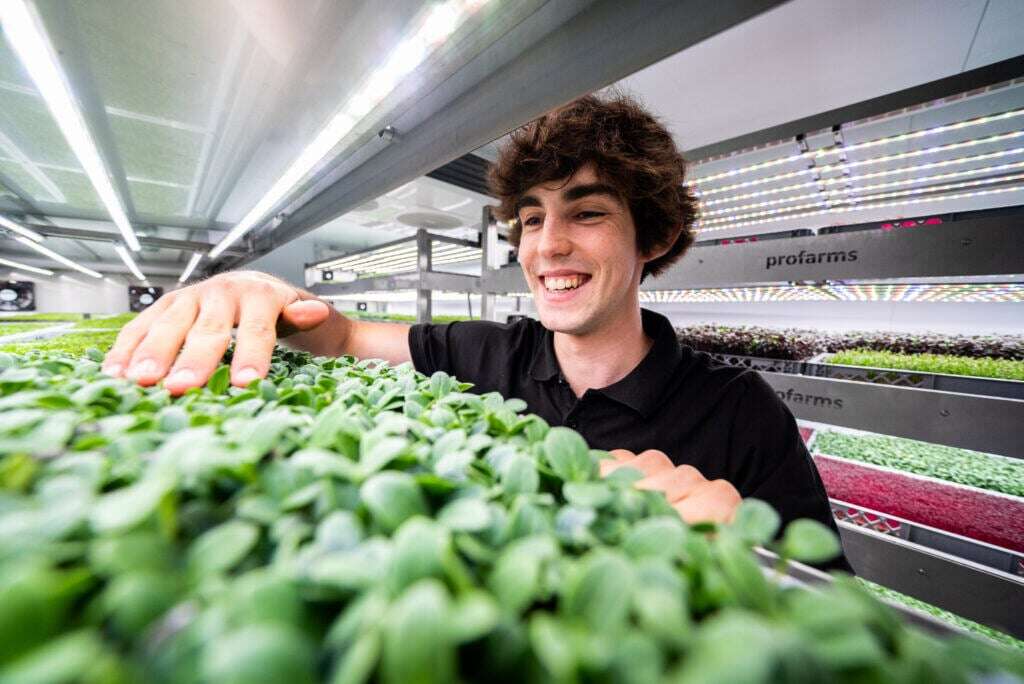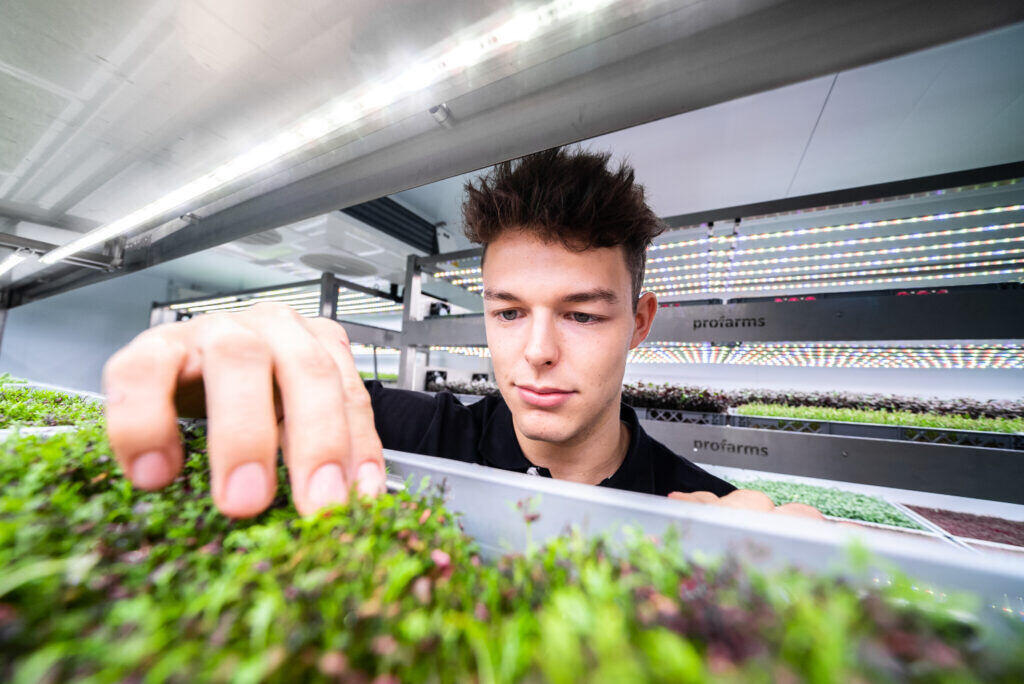Two young university students getting into vertical farming with enthusiasm: what motivated you?
I first heard about vertical farming two years ago after studying at the agricultural institute of San Michele All’Adige. Seeing this practical application of sustainable agriculture immediately fascinated me.
Vertical farming requires close ties between technique and nature. Specific skills are needed to find the right substrate and the right amounts of light and water.
What were your goals?
Our primary objective is to produce microgreens using as few resources as possible and thus promote sustainable agriculture.
We are one of just a handful of European producers whose products are certified organic. Unlike many others, for example, we don’t even use the classic plastic packaging trays. We only use containers made of recyclable materials and doing so involved some in-depth studies to ensure the microgreens continued to last just as long.

Have you observed any increase in production following the use of LED lamps?
For us it’s not so much the quantity of production that’s important as the quality. LED lighting has allowed us to boost quality due to the fact that our microgreens contain less water and have stronger cell walls, making them tastier; or, rather, they develop more aromatic substances. Good light intensity means the plant seeks out less light, making the bud more compact. This requires less water (the longer the sprout, the more water it contains).
Did the lighting produce H2O savings?
Yes, the higher light intensity ensured by LED lamps means we’ve succeeded in lowering water consumption, achieving the twin goals of reducing resource consumption and producing quality microgreens with more intense flavour.

From, above all, a lighting perspective, how long do you think the investment will take to pay for itself?
Doing an exact calculation of the time needed to get a return on the initial investment is no easy task. That’s because ours is a complex system in which all components - such as, in this case, lighting - are highly interdependent. So it’s tricky to provide an answer that isolates a single component from the entire system.
Are you managing to achieve good crop reproducibility/homogeneity?
For us, homogeneity is a key parameter. We work with numerous local chefs who need to serve guests dishes with consistent presentation and taste, and we’re committed to ensuring that those chefs' needs are met.
Have you had any nutraceutical analysis done? If so, have you ascertained whether using LED lighting has an influence in this regard?
We’ve done analysis that shows high levels of vitamin C, up to 30% more compared to foods such as spinach that are usually high in vitamin C. However, we didn’t perform any analysis during the initial stage of the project so it’s difficult to make a comparison. But we can say that the quality and taste of microgreens are strongly influenced by the way they’re grown, and that the same results cannot be obtained in greenhouses.
